Beauty, serenity, warmth, and remoteness—Hawaii possesses all the elements of a quintessential paradise.
But the 50th state is far more than a mere playground for visitors—idyllic, yes, but with potential dangers lurking within its natural glories.
The key is to not evade the world of Hawaii beyond your resort but to approach your activities mindfully. Here are the top 10 things not to do in Hawaii—and still have a spectacular time while you’re at it.
1 • Disregard high surf
Hawaii is globally known for its epic waters: bathwater temps, waves clear as glass, marvelous marine life—and waves that can be downright astonishing. Indeed, the islands are home to some of the biggest surf breaks on Earth, including Maui’s Peahi (aka Jaws) and Oahu’s Banzai Pipeline. Add a huge dose of sunshine to the mix and diving into the ocean on a whim may be uber-tempting.
Keep in mind, however, that those who are relishing those enormous waves are ocean experts—veteran surfers (for the most part) who know how to read sets and maneuver through, and across, walls of heavy water. Many are also well-versed with the area’s reefs and have obtained the skills they need to survive unpredictable, even violent, breaks.

In other words, jumping into the ocean when there’s a high surf advisory—or just plain high surf—is one of the most hazardous mistakes you can on your Hawaiian vacation. In 2013, eleven people died of drowning on Kauai alone, while by May of 2016, three tourists had met their demise in the Pacific while visiting the islands.
“Hawaii’s rate of drownings per visitor is 13 times the national average…and 10 times the drowning rate for Hawaii residents,” The Huffington Post says, reporting that nearly one visitor dies per week in Hawaii, typically while engaged in common vacation activities such as swimming, snorkeling, and hiking.
If high surf warnings have been established at your cove of choice, head to the leeward side of whichever island you’re visiting—surf tends to be quieter on southern shores—stay sand-side, or swim only in areas that are observed by lifeguards. And beware of rip tides: “Rip currents are particularly prevalent when shore-breaking swells are big because as wave heights increase, the force behind waves crashing and pulling back out into the ocean increases exponentially,” Hawai’i Magazine reports. “The force of a wave can be determined by taking the wave height and squaring it. That means a three-foot wave crashing along the beach packs nine times the punch of a one-foot wave, and a five-foot wave is actually 25 times stronger than a one-footer.”
2 • Frolic in shore breaks
Play in the ultra-mellow whitewash at a beach like Maui’s Maluaka and chances are your only complaint will be a swimsuit filled with sand.
But swimming, snorkeling, romping, and boogie and bodyboarding in larger shore breaks may put your life in jeopardy: Mere miles away from Maui’s Maluaka is one of the Aloha State’s deadliest beaches: Big Beach (or Makena State Park) earned the moniker “Breakneck Beach” because it sees more spinal cord injuries than any other beach in Hawaii, thanks to a shore break that’s literally slamming. Take it from the San Francisco Chronicle, who reports, “A Valley Isle reader shared this typical anecdote from Makena, also known as Big Beach: ‘While visiting my orthopedic doctor recently, there were two gentlemen in the waiting room who, unknown to each other, had just broken their shoulder blades trying to swim at Big Beach. Two tourists, same beach, same day, same doctor’s office. Makena is known as ‘breakneck beach’ to the locals and the surf here breaks right on the shore…it’s gorgeous and alluring, but don’t let the water fool you, this is a dangerous beach for swimming.’” Also treacherous? Kauai’s Lumahai’i Beach (aptly nicknamed “Luma-die”), Oahu’s Sandy Beach (where an ambulance is perpetually parked nearby), and the Big Island’s Hapuna Beach State Park.

No matter where you’ve chosen to take a dip, don’t go out if you’re unaccustomed to swimming in shore breaks, and don’t follow the lead of locals who may be having a ball in these waves: Many were practically born in the water.
3 • Anticipate eternally perfect weather
No doubt about it—Hawaii has some of the finest weather in the world, from an average daily temp of eighty degrees to fast-melting snow that hits only our loftiest peaks.
That said, Hawaii is also prone to a number of weather woes, including hurricanes, tsunamis, rock falls, and, perhaps most notably, flash floods—sudden surges of heavy downpours that can be fatal. In 2016, an El Cajon, California woman was killed on Oahu’s Wailua River when a flash flood overturned her kayak, while in March of 2017, seven people were rescued in the usually super-dry town of Kihei, Maui when heavy rains on the island’s upper slopes caused widespread flooding across the Valley Isle.
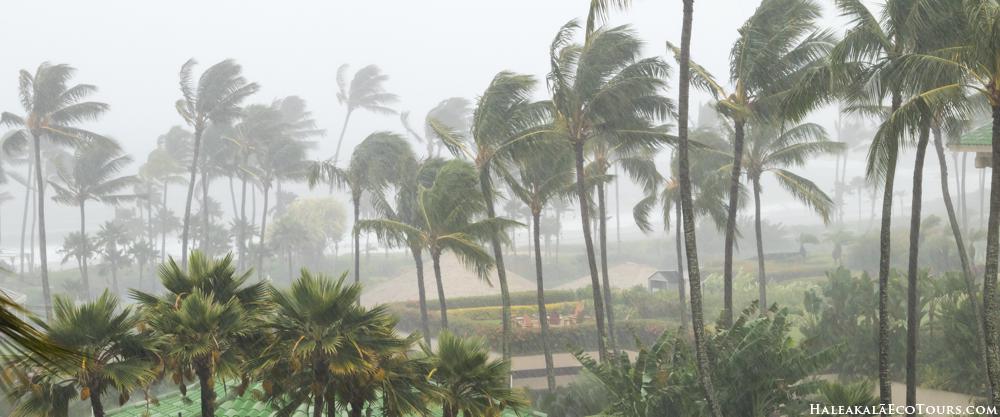
Translation? Whether you’re heading out for a hike, swimming in a natural pool, or driving to a remote corner of an island (and everything in between), check the weather—and change your plans accordingly. After all, you can’t beat Mother Nature—even if you are on vacation.
4 • Hike wherever you please
“There’s a Hawaii vacation mentality that, ‘I can do anything I want here because I’m in paradise,” says President of the Visitor Aloha Society of Hawaii, Jessica Rich. “They take risks here that they would never take at home.”
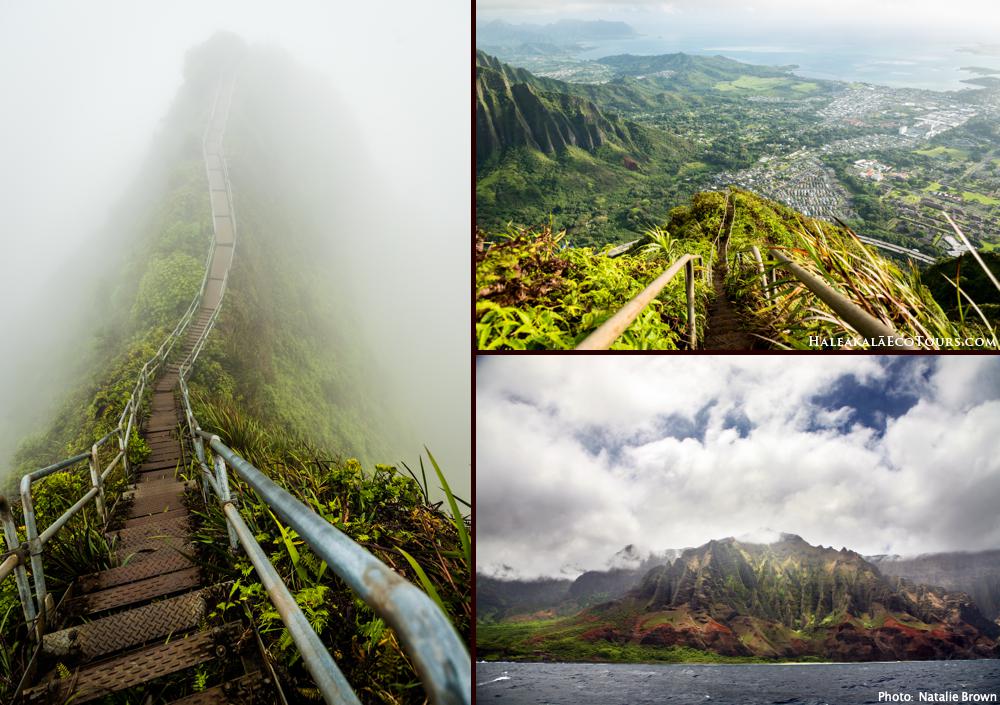
Among those chances visitors often take? Hiking in places that are prohibited to the public or require a permit, whether it’s Kauai’s precarious Kalalau Trail on the Na Pali Coast or Oahu’s “Stairway to Heaven.” Such hikes are restricted or outright verboten because of the extreme dangers they present, from steep cliffs and slippery terrain to volatile weather. (In 2014, 98 people had to be rescued from the Kalalau Trail when a flash flood struck the popular trail, rendering it one of the most significant trial rescues in the island’s history.) Likewise, diverging from a set trail presents similar threats, and has led to the deaths of both visitors and kama’aina.
Heed the words of Curt Cottrell from the Department of Land and Natural Resources: “Go on a managed state trail. Don’t go out of bounds, avoid hiking on ridgetops that don’t have management facilities on them.” We’ll add to that by reminding you here to never hike alone, bring along a map of the area, pack extra water and snacks, and, to echo #3, check the weather before commencing your journey (and pay attention to it while you’re adventuring).
5 • Step on coral—and mess with its marine life
From lime green to flamboyant peach, the corals of Hawaii are something else. Spanning over 1,200 miles in the center of the Pacific, they comprise approximately 85% of the United States’ coral reef population and hold marvels that range from urchins to sea sponges.
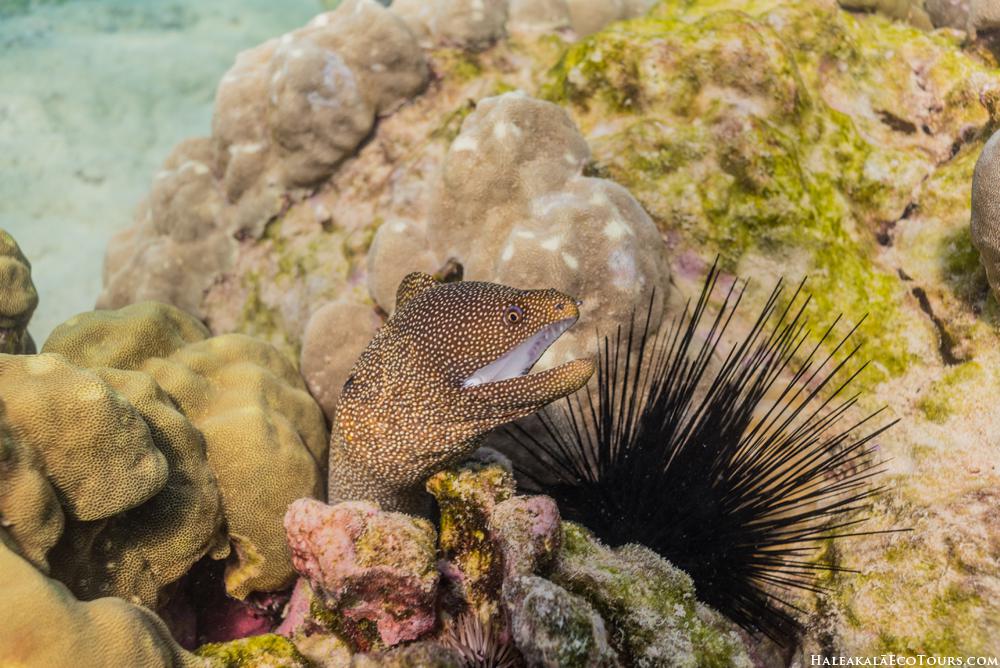
But coral embodies the old adage: that the greatest beauties have the sharpest stings. Certain types of coral—such as the venomous inhabitant of tropical and subtropical waters, fire coral (which bears more resemblance to hydrozoans)—may cause serious irritation or injury if you happen to brush against them. Other types of coral are downright toxic; if the coral punctures your skin—abrasions are quite common in Hawaiian waters—you might just put yourself at risk for “coral poisoning,” a reaction that could include fever, swelling, fatigue, chills, and inflamed glands. What’s more, coral reefs house a number of creatures that are best observed from afar, including sea anemones, eels, select types of fish, and conus—a sea snail (of which there are 30 or 40 species of in Hawaii) that may be lethal.
Moreover, think of the damage you may cause by disturbing coral—they’re exceptionally fragile specimens, so much so an entire colony may die from simply grazing against it.
6 • Swim with open abrasions
And speaking of infections: According to Hawaii News Now, the Aloha State leads the nation in deadly staph infections—that is, a specific strain of staph known as Methicillin-Resistant Staphlococcus Aureus (or MSRA) that’s impervious to antibiotics, may cause death, and is twice as common in Hawaii than anywhere else in the U.S. (In fact, it kills as many as 200 people in Hawaii per year.) Deemed a “superbug,” its victims include surfers, swimmers, snorkelers—or anyone who is exposed to the ocean.
“It’s still safe to go in the water, especially if you shower thoroughly before and after swimming, but antibiotic-resistant Staphylococcus aureus, a strain of bacteria that can cause staph infections that are difficult to treat with traditional anti-infection drugs such as methicillin, can be caught when you take a dip in ocean water,” said Dr. Lisa Plano of the University of Miami’s Miller School of Medicine. Our advice? Skip the sea if you have an open wound and seek medical attention immediately if you find the area swollen, red, or irritated.
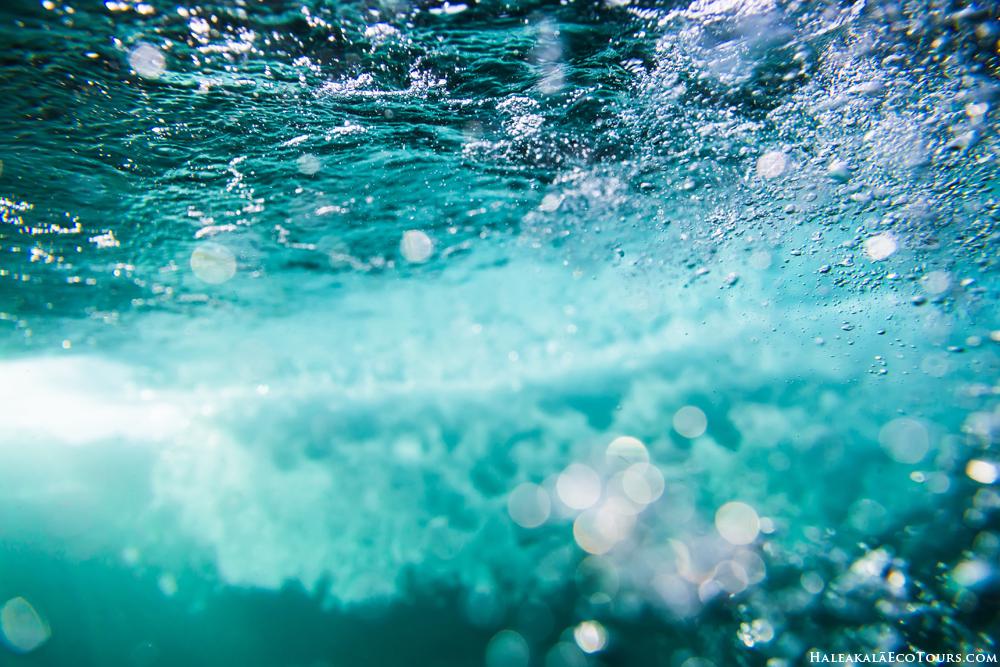
Additionally, beware of the risk of leptospirosis. “A century after it was first identified in Hawaii,” Honolulu magazine writes, “leptospirosis continues to be a quiet, underestimated threat” whose “ravages astonish its victims and their families.” Caused by a microscopic bacteria called Leptospira interrogans, the infection can be caught by swimming (or wading) in freshwater pools and puddles, rivers, ponds, streams, or mud that’s contaminated with the “urine, blood or tissues of infected animals, most commonly rats, mongooses, swine and cows.”
Sound nasty? It is—and it engenders symptoms that range from muscle pain to nerve damage (when left untreated). Given the abundance of rain the Hawaiian Islands receive, it’s common in our wetter climes (outbreaks are also more frequent during our warmer months) and infects roughly forty percent of the state’s rat population.
“Visitors are frequently at risk,” Honolulu magazine continues. “They get exposed while hiking or swimming in Hawaii, but they don’t become ill until they return home. On the Mainland, physicians are less aware of the disease and more inclined toward conservative treatment.”
While you may be pretty close to certain that you won’t be encountering actual rodents on your trip to Hawaii, keep in mind that the most popular hiking spots on Oahu—including Oahu’s Kapena Falls—have produced a number of cases. As with the possibility of contracting staph, it’s crucial to take precautions—namely, avoiding swimming with open abrasions and refraining from drinking contaminated water.
7 • Approach blowholes
Maui made major headlines in 2011 when a San Anselmo, California tourist met his death after a large wave knocked him off his feet and slammed him into Nakalele Blowhole. In 2002, another California tourist drowned when he fell into Halona Blowhole on Oahu’s East Side. Granted, blowholes—which are created when sea caves grow towards land and result in vertical shafts (and titillating explosions of water)—are fascinating things, but, despite the warnings, visitors continue to near too close to these natural wonders and place themselves in serious peril by doing so. Even if the waters surrounding the blowhole are calm, the best plan of action is to observe them from a distance. After all, Hawaii is also notorious for rogue waves.

8 • Flowing lava
It may seem like a no-brainer—stay away from flowing molten lava, because, well, it’s on fire. And yet, a healthy percentage of the 1,000-1,500 people who visit the Big Island’s Hawaii Volcanos National Park on a daily basis edge close to the outpouring of soon-to-be-new-Earth, which can (and has) led to injuries.
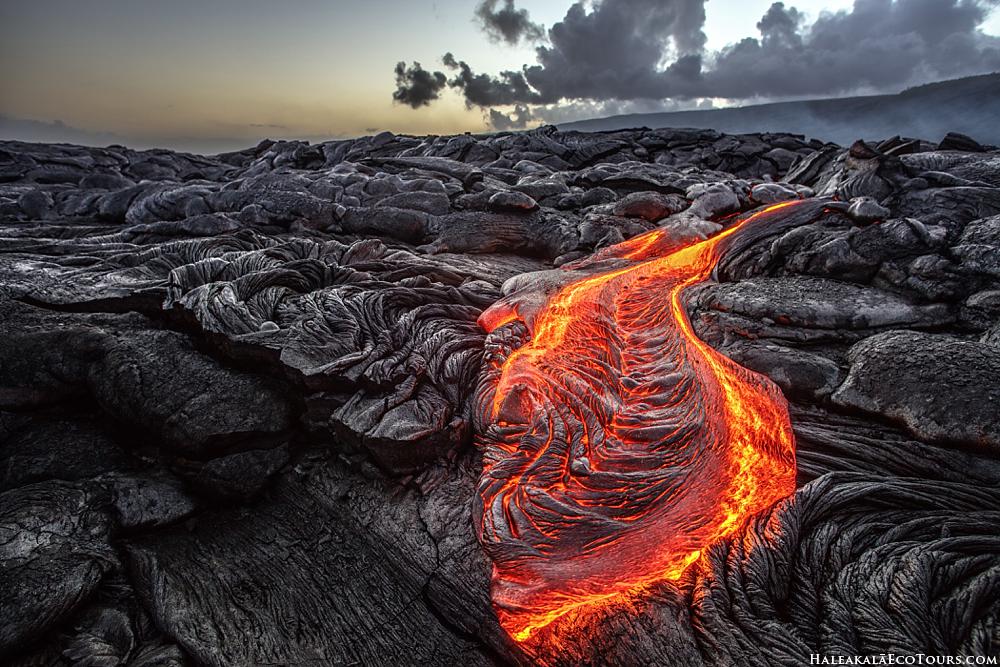
“Hikers can get close enough that the soles of their shoes get hot,” Fox News reports. “Also, the area is flanked by hardened lava rock as sharp as glass. Many people have suffered lacerations while trying to cross the jagged landscape,” said park spokeswoman Jessica Ferracane. “Everybody wants to see the lava flow, but not everybody should be hiking out there,” she continued. Further, when lava makes contact with the Pacific, it “reacts with the saltwater and produces harmful hydrochloric acid, which wafts into the air,” said geologist Janet Babb.
9 • Spurn sunscreen
There are few joys in the world like kicking back on a Hawaiian beach and doing nothing more than soaking up its (prodigious) sun. That said, attempt a day on our luminous shores (or mountains, valleys, and slopes) without sunscreen and there’s almost a 100% chance you’ll be sorry later. Indeed, Hawaii is rated one of the most dangerous places in the world when it comes to sunburns. Why? Besides our proximity to the equator, most excessive sun exposure occurs on our beaches, and “sand reflects 25 percent of the sun’s rays, giving unsuspecting beachgoers an extra dose of UV exposure,” The Huffington Post reports. What’s more, if you haven’t been in the sun for some time, you may be even more prone to sunburn.
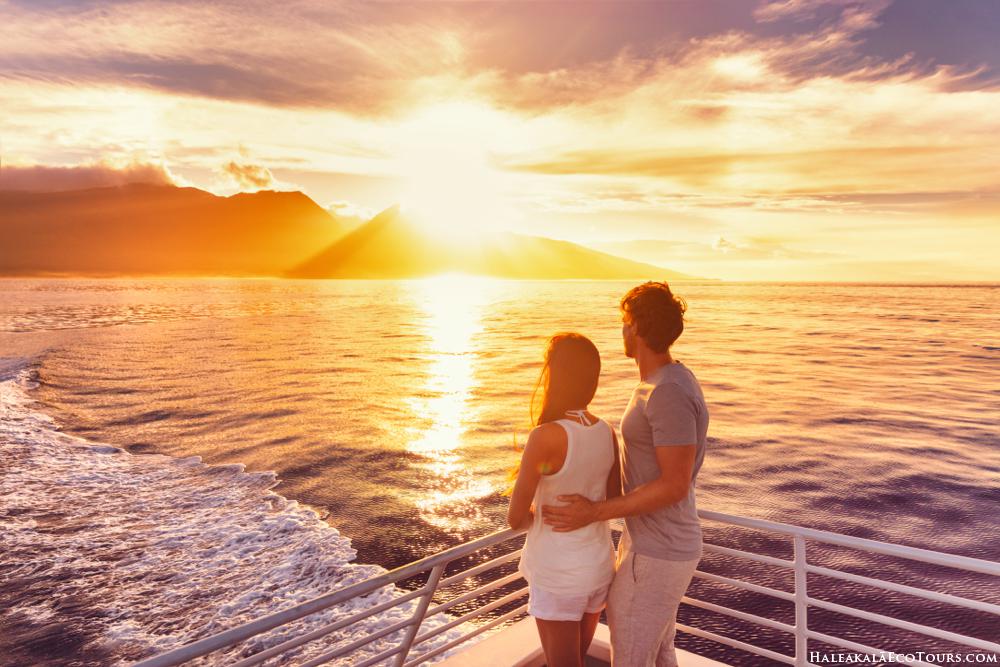
A few words of advice: Apply sunscreen early (and apply it often), wear a hat, seek shade, and plan your beach trips before 9 am and after 2 pm. Finally, choose an eco-friendly form of protection: Many sunscreens damage coral reefs and other marine life, including our beloved honu.
10 • Swim in perilous places
Hawaii doesn’t just boast swimming spots right off its sunny shores: a number of baths and pools are spread across the islands (and offer mad enticement), from Maui’s Olivine Pools (a set of tide pools on the island’s West Side) to Kauai’s Queen’s Bath (another natural tide pool in the Garden Isle’s Princeville). But as tempting as these places may be, they’re best left to the creatures of the sea: Olivine Pools has seen a number of drownings, including a Bay Area couple in 2006 and a California man in 2004, while Queen’s Bath has also been the scene of drownings and injuries. This doesn’t mean you must sequester yourself in your resort and enjoy only manmade pools and cascades; rather, it’s another reason to remain vigilant—and respectful—when enjoying Hawaii’s abundant pleasures. More reasons to enjoy a safe, guided tour with Haleakala EcoTours!
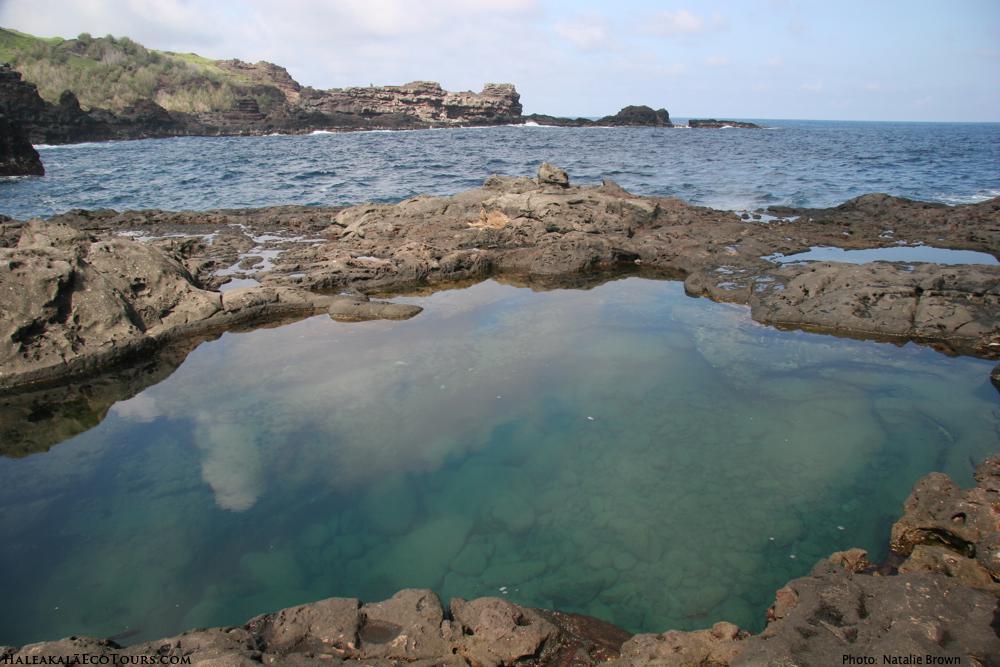

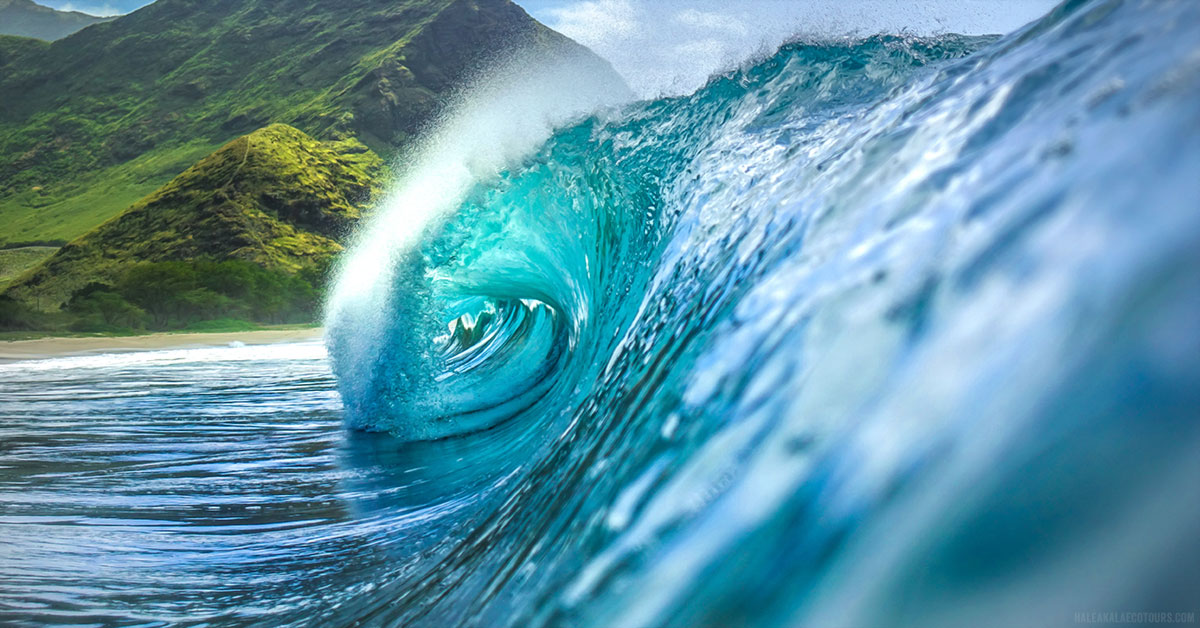



I love Maui Hawaii for the golf and site seeing and the sea.
Can’t wait to be there once again… See you soon!